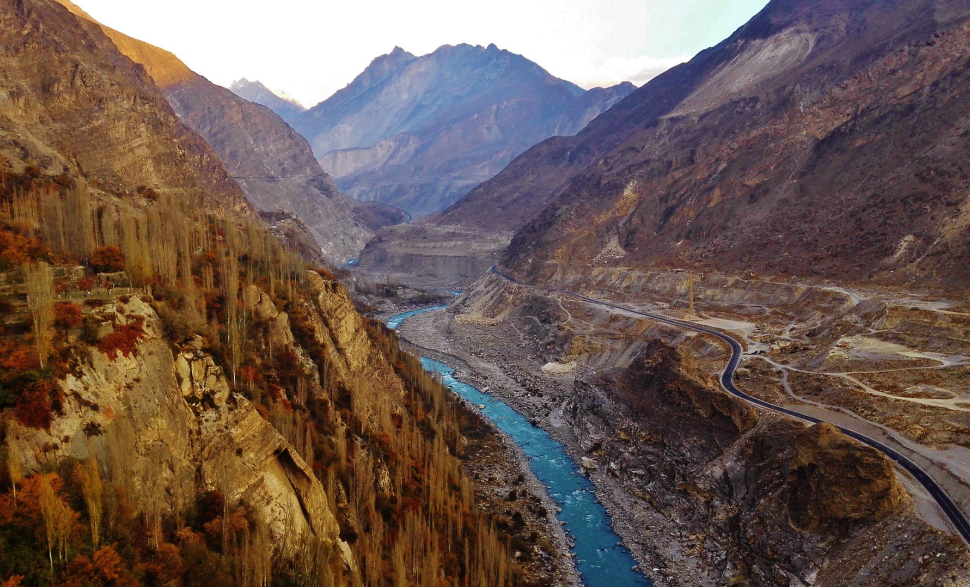International arena is significantly affected by the CoVid-19 pandemic and as last months show a global economic slowdown, CPEC’s future is raising concerns.
China’s Belt and Road Initiative (BRI) is facing significant setbacks due to the new international norms caused by the growing impact of the CoVid-19 pandemic and global economic slowdown that has occurred these last several months. In fact, the economic and financial structuring of the Belt and Road Initiative has shown severe weaknesses in the way in which the BRI was originally formed. After all, it provided both struggling and developing nations with hundreds of billions of dollars in loans, while enabling Beijing in its quest to build up its global power projection and leveraging capabilities. However, the CoVid-19 pandemic and global economic slowdown resulted into a liquidity crisis for many of these same nations that Beijing showered with cash throughout the years. The big concern for these loan recipient nations is that part of the agreements with Beijing required them to put up their national assets and infrastructures such as ports, mines and other crown jewels as collateral.
This has evolved into a very difficult situation for both the indebted countries and for China as there are major decisions to be made on all sides, whether in the form of debt restructuring, delaying of repayments, or even debt forgiveness. The latter would be a very difficult choice for the Chinese government as it would place significant strain on both their own financial system and domestic status at home in regard to relations with the Chinese people. However, Beijing is also in a position where they will have to weigh the risk on how it would impact their future international standing, image, global power projection, and leveraging capabilities.

In addition, it will require them to also weigh the risk of these dilemmas and consider how they will impact China’s future economic growth, in light of increasing global discontent over their handling of the CoVid-19 pandemic. It will also be dependent on other issues where discontent has grown in abundance lately. One example is the recent passing of a controversial national security law that violates the long-term agreement that allows Hong Kong to remain autonomous until 2047. The list also includes growing geopolitical friction with the United States and several other global players such as Taiwan, India, Japan, South Korea, and the European Union on issues such as trade, security, border skirmishes, and other growing regional disputes.
The Belt and Road Initiative (BRI) is a $1 trillion plus infrastructure financing program that is aimed at building a series of global trade zones that connects more than 60 countries to Beijing’s economic web. It would resemble a modern version of the ancient silk road but would combine both land and sea trading routes. However, China’s lending has far exceeded that of the World Bank and the International Monetary Fund (IMF) and this also includes both hidden and underreported loans made by their government. Pakistan has been a big beneficiary of China’s Belt and Road Initiative plan. However, their foreign minister recently requested in April 2020 that it was imperative to restructure the payments of billions of dollars in loans that were borrowed for projects pertaining to the China-Pakistan Economic Corridor (CPEC).


CPEC is a signature project of China’s Belt and Road Initiative. In fact, it is often considered being the flagship of the BRI project, which is why a wide variety of eyes are focused on watching how the China-Pakistan relationship evolves. This is especially imperative in a world where CoVid-19 and geopolitical friction can play a heavy influencer in the future outcome of events. The program was launched in 2015 between China and Pakistan with the intention of connecting a network of land and sea routes between Southeast Asia, Central Asia, the Gulf region, Africa, and Europe. The connection would especially allow for Chinese routes to go through Afghanistan and Pakistan as well. In fact, CPEC would enable Pakistan’s, Gwadar Port, located on the Arabian Sea in southern Balochistan, to become a key hub that connects China’s routes to the Middle East. This will be especially beneficial to Beijing in their ongoing quest to secure new routes for oil importation.
The CPEC program is also being streamlined in light of recent news of the phased withdrawal of U.S. troops from Afghanistan. Both Pakistan and Afghanistan are part of this strategic corridor for China and the CPEC deal consists of $87 billion worth of infrastructure projects, with the intention of benefitting Pakistan over a period of time. However, 5 years later, only a quarter of projects that make up of roughly $20 billion have been spent on mainly transport and energy infrastructure. Also, the China-Pakistani relationship has been mixed with a combination of trust issues and financial debt concerns. For instance, the Pakistani government transferred the leasing rights for Gwadar Port to the China Overseas Port Holding Company that grants them with 91% of the port generated profits, while Islamabad would receive just 9%. This would also deny Balochistan’s provincial government any revenue as well.
